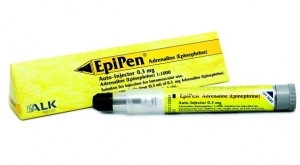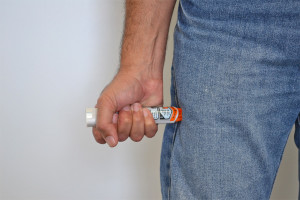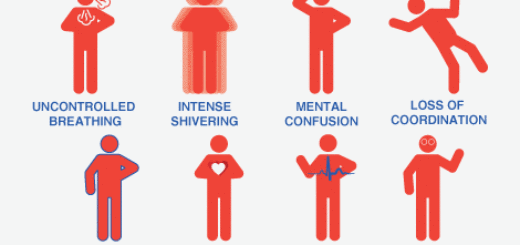How to use an epinephrine auto injector for anaphylaxis
Anaphylaxis is a severe life threatening allergic reaction. Epinephrine, also called adrenaline, should be administered as soon as the patient experiences any severe symptoms of anaphylaxis such as respiratory distress, hypotension or a sense of impending doom.
Anaphylaxis may be caused by insect stings or bites, foods, drugs and other allergens as well as idiopathic (unknown cause) . The self administered auto-injector is both highly effective and easy to use.
Our Online Anaphylaxis Awareness course provides more information on the causes and symptoms of Anaphylaxis.
The auto-injectors deliver fixed intramuscular dose of epinephrine. Each patient should have two auto-injectors in case of the need for two doses.
Epinephrine administered early improves the outcome from anaphylaxis. Its benefits include:
- the reversal of anaphylactic shock
- decreased swelling around the airway and in the lungs
- reduced release of inflammatory mediators
While there are no absolute contraindications to the use of epinephrine in a life-threatening situation, side effects may include palpitations, tachycardia, sweating, nausea and vomiting, respiratory difficulty, pallor, headache, dizziness, nervousness and anxiety.
How to use an Epipen Autoinjector
- Grasp the Epipen® in your dominant hand, with your thumb closest to the grey safety cap
- with the other hand, remove the grey safety cap
- hold the Epipen® approximately 10cm away from the outer thigh; the black tip should point towards the outer thigh
- jab firmly into the outer thigh so that the Epipen® is at a right angle to the outer thigh, through clothing if necessary
- hold the Epipen® in place for ten seconds
- the Epipen® should be removed and handed to the ambulance crew or nurse taking over the management of the patient
- massage the injection area for ten seconds
The patient must visit a hospital because relapses can occur within a few hours and/ or further management may be required.
Administer a second Epipen® after 15 minutes if the patient doesn’t respond or original symptoms return.
Never at any time:
- use an Epipen® to practice emergency administration
- remove the grey safety cap until ready to use the Epipen®
- place fingers over the black tip
- attempt to inject into a vein, buttocks or the extremities
- leave the patient until the ambulance crew arrive.
First aiders and first responders should continually assess the airway, breathing and circulatory status and prepare to initiate basic life support procedures and management of shock if the patient’s condition deteriorates.
All who treat anaphylaxis should be aware of the potential for confusion between anaphylaxis and a panic attack. Victims of previous anaphylaxis may be particularly prone to panic attacks if they think they have been re-exposed to the allergen that caused a previous problem. The sense of impending doom and breathlessness leading to hyperventilation are symptoms that resemble anaphylaxis in some ways.
Want to learn more about anaphylaxis and first aid? Why not take one of our free online first aid classes with free first aid certification!







